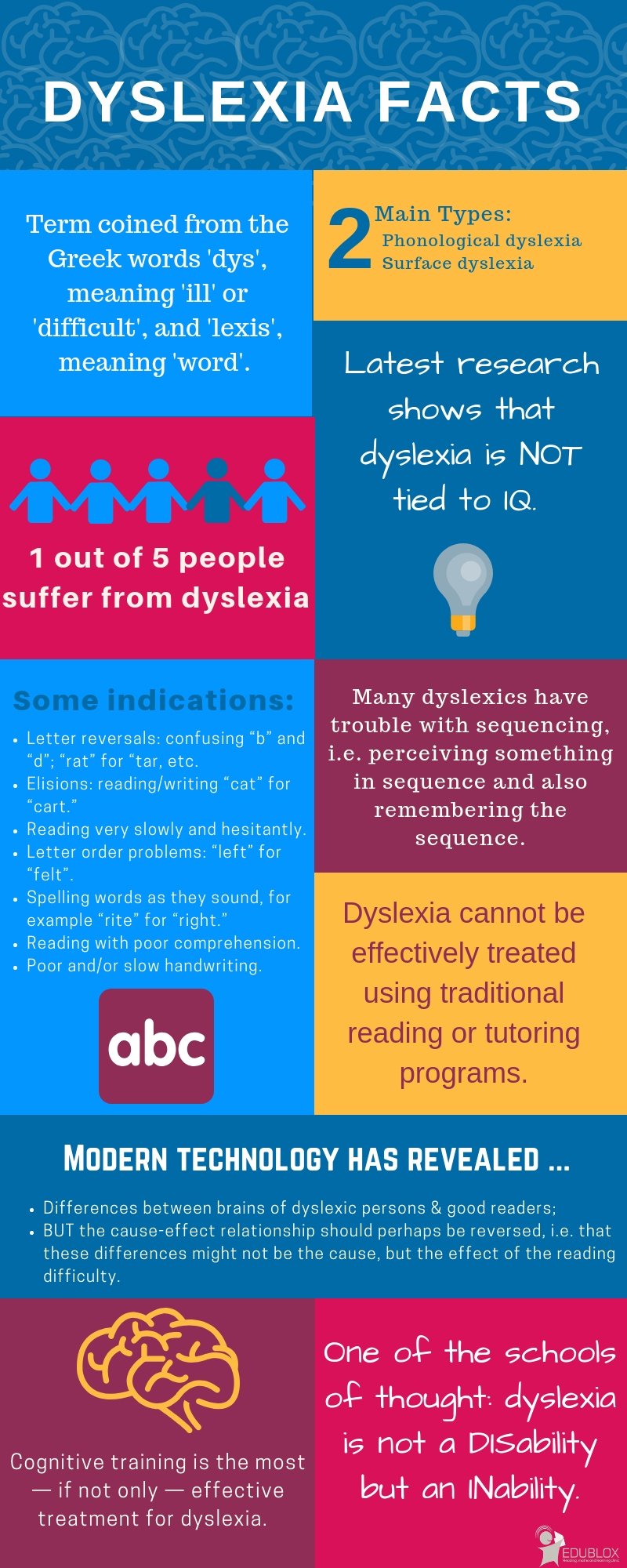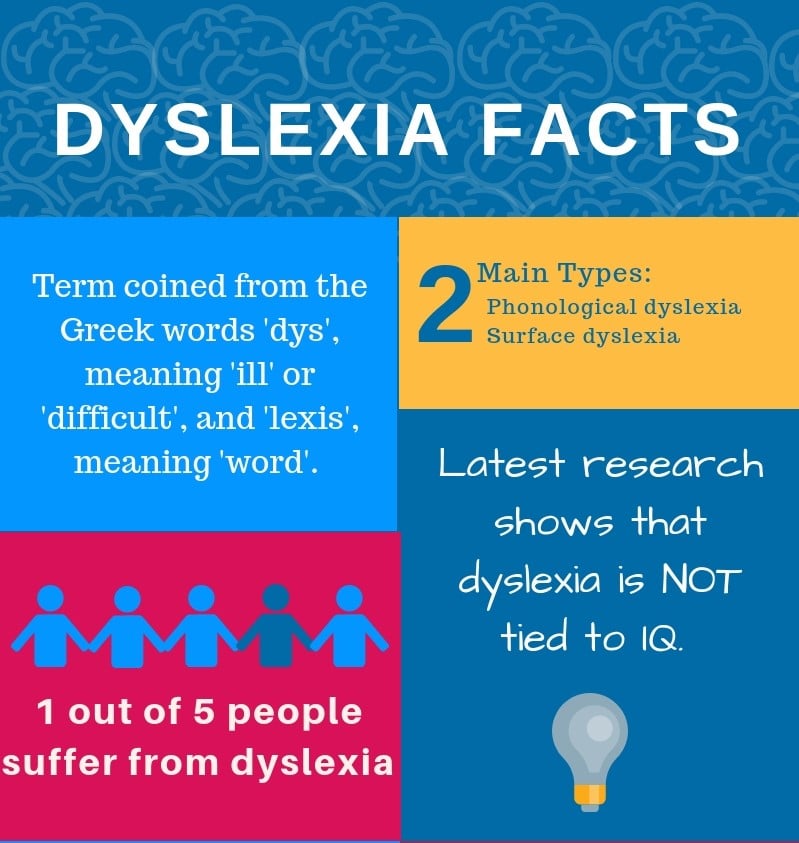
The term dyslexia is used to describe a severe reading difficulty. Over the years, the term has been given various definitions, and for this reason, causing many teachers to resist using the term at all. Instead, they used “reading disability” or “learning disability” to describe conditions more correctly designated as dyslexia.
According to the International Literacy Association, “There is no empirical basis for using the term dyslexia to distinguish a group of children who are different from others experiencing difficulty in acquiring literacy.” Accordingly, dyslexia is simply another name for students on the lowest end of the reading continuum.
While much uncertainty continues to surround dyslexia, here are some facts and stats about dyslexia:
1.) James Hinshelwood named it “congenital word-blindness”
In 1907, James Hinshelwood, a Scottish ophthalmologist, was one of the first physicians to describe the clinical picture of developmental dyslexia. He named the condition “congenital word-blindness.” He considered it treatable through personal and systematic instruction, which should be started sooner rather than later — “when the brain is most plastic, when it is most receptive of impressions and most capable of further development” (Hinshelwood, 1917, p. 97).
Hinshelwood even had hope for people who suffered from acquired word-blindness, as he believed that reeducation would assist the corresponding center on the opposite side of the brain to take over the functions of the defective cerebral area, and detailed case studies of his patients who had done so.
2.) The term “dyslexia” was coined from two Greek words
The term dyslexia was introduced in 1884 by the German ophthalmologist Rudolf Berlin in “Over dyslexie.” He coined it from the Greek words dys meaning ill or difficult, and lexis, meaning word, and detailed his observations of six patients with brain lesions who had full command over verbal communications but had lost the ability to read.
In the century to follow, the narrow definition Berlin attached to the term dyslexia would broaden. Today the term refers to persons for whom reading is beyond their reach. Spelling and writing are usually included due to their close relationship to reading.
3.) Dyslexia symptoms are many and varied
Symptoms of dyslexia include:
- Difficulty blending individual sounds into words. Children with dyslexia may sound out the letters of the word but then be unable to say the correct word. For example, they may sound the letters ‘c-a-t’ but then says cold;
- Letter reversals (confusing b and d);
- Putting letters in the wrong order (reading ‘felt’ as ‘left’);
- Elisions (reading ‘cat’ for ‘cart’);
- Reading very slowly and hesitantly;
- Reading with poor comprehension.
4.) Dyslexia is a common problem
According to a Yale study, 1 out of 5 people have dyslexia, and 80 to 90 percent of children with learning disabilities are dyslexic.
5.) Dyslexia runs in families
The prevalence rate for dyslexia in the general English-speaking population is between 5 and 17%. However, based on familial risk studies, the rate of reading-related skill deficits (e.g., word reading, orthographic coding, phonological decoding, and phoneme awareness) is between 35 and 40% (Molfese et al., 2008).
6.) Dyslexia, like hypertension, can vary in severity
The terms mild, moderate, and severe are commonly used to describe the degree:

- Most adults show some blips and would be levels 1 or 2.
- Levels 4 or 5 have difficulty in spelling and punctuation. If they maintain high levels of discipline, they can be successful.
- Levels 6 or 7 have difficulty with spelling and reading textbooks. They can sometimes finish college, but it takes tremendous effort.
- Levels 8 or 9 find academic learning almost impossible. It takes 2-3 times longer to finish assignments. They need constant help.
7.) People with dyslexia do not see letters and words backward
Reversals and mirror writing are usually caused by a visual processing deficit, specifically an inability to interpret position-in-space. Position-in-space is the ability to perceive an object’s position in space relative to oneself and the direction in which it is turned, for example, up, down, in front, behind, between, left, and right. When discriminating between a b and a d, the directions left and right are especially important.
8.) Students with dyslexia often have difficulties with spelling
Spelling proficiency is related to visual memory capacity, says Richard Gentry in his book Breaking the Code: The New Science of Beginning Reading and Writing.
9.) Many people with dyslexia have trouble with sequencing
Sequencing is the ability to perceive and remember something in sequence.
A study, published in the Journal of General Psychology, compared 33 dyslexic and 33 control eight- to twelve-year-old children and found the dyslexic children inferior to controls on tasks involving visual sequential memory and auditory sequential memory.
Another study, published in the Archives of Clinical Neuropsychology, compared 24 readers with auditory dyslexia and 21 with visual dyslexia to 90 control group participants and revealed auditory sequential memory impairments for both types of readers with dyslexia and multiple strengths for good readers.
10.) Dyslexia is linked to slow processing speed
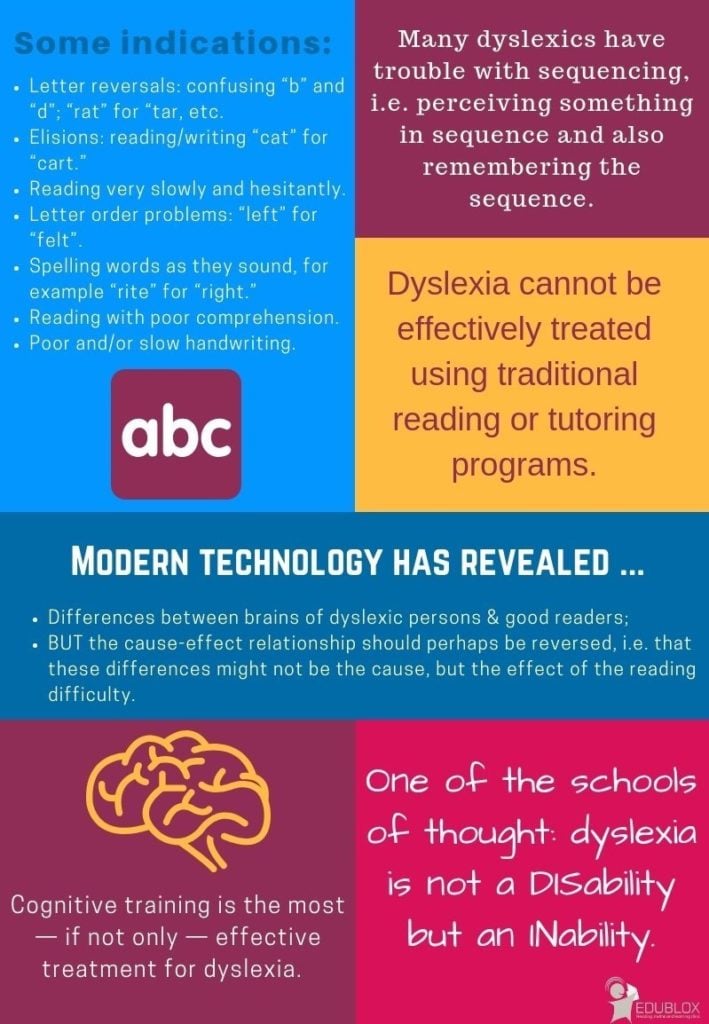
Processing speed can be defined as how long it takes to get stuff done.
University of Science and Technology in Trondheim gave two simulated driving tests to six dyslexic volunteers and 11 others. They were shown road signs as they drove on simulated country and city roads at different speeds.
The researchers found that people with dyslexia were 20% slower to react to traffic signs during the rural drive and 30% slower to react in the city than the nondyslexic controls.
.
11.) Dyslexics often have deficits in auditory working memory
Weiss and colleagues (2014) tested dyslexic and nondyslexic musicians on auditory processing and auditory memory.
Dyslexic musicians scored as well as their nondyslexic counterparts in auditory processing tasks and better than the general population. However, they performed much worse on tests of auditory working memory, including memory for rhythm, melody, and speech sounds.
Moreover, these abilities were intercorrelated and highly correlated with their reading accuracy, which means that the dyslexic musicians with the poorest auditory working memory tended to have the lowest reading accuracy.
.
12.) Many people with dyslexia suffer from poor long-term memory
A study, published in Dyslexia, compared the performances of 60 dyslexic children to that of 65 age-matched typical readers on verbal, visual-spatial, and visual-object tasks. Results documented a generalized impairment of long-term memory capacities in dyslexic children, and the results did not vary as a function of children’s age.
13.) There are two main types of dyslexia
Reading difficulties related to visual-processing weaknesses have been called surface dyslexia, dyseidetic dyslexia, and orthographic dyslexia. Reading delays associated with phonological-processing difficulties are referred to as phonological dyslexia and dysphonetic dyslexia.
14.) Dyslexia is not tied to IQ
Traditionally, dyslexia has been defined in terms of a discrepancy between actual reading performance and what would be expected based on the child’s intelligence. However, research has shown that this model is no longer tenable.
Using brain imaging scans, Tanaka and colleagues (2011) found no difference between how poor readers with or without dyslexia think while reading. Research results indicate that poor readers of all IQ levels showed significantly less brain activity in the six observed areas than typical readers. However, there was no difference in the brains of the poor readers, regardless of their IQs.
15.) The dyslexic’s brain differs from the typical reader’s brain
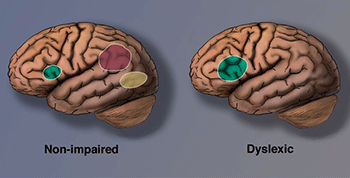
In a meta-analysis of functional neuroimaging studies of dyslexia, Martin et al. (2016) list studies in which differences between groups with and without dyslexia were found in specific brain regions. The most consistent findings concerned the left occipitotemporal cortex, which includes the so-called visual word form area (VWFA), thought critical for reading (shown in yellow). The left inferior parietal lobule came in a close second in the meta-analysis study by Martin and colleagues (shown in red). This part of the brain is involved in word analysis, grapheme-to-phoneme conversion, and general phonological and semantic processing.
Imaging also reveals compensatory overactivation in other parts of the reading system (shown in green). The compensatory neural systems allow a dyslexic person to read more accurately. However, the critical visual word-form area remains disrupted, and difficulties with rapid, fluent, automatic reading persist. As a result, the person with dyslexia continues to read slowly (Shaywitz, 2005).
16.) Brain differences might be a consequence and not the cause
These brain differences are often viewed as the cause of dyslexia. However, studies suggest that the cause-effect relationship is reversed. In other words, these brain differences are not the cause of reading difficulties but the result.
In one study, published online in the Journal of Neuroscience, researchers analyzed the brains of children with dyslexia. They compared them with two other groups of children: an age-matched group without dyslexia and a group of younger children with the same reading level as those with dyslexia. Although the children with dyslexia had less gray matter than age-matched children without dyslexia, they had the same amount of gray matter as the younger children at the same reading level.
Krafnick et al. (2014) say this suggests that the anatomical differences reported in left-hemisphere language-processing regions of the brain appear to be a consequence of reading experience as opposed to a cause of dyslexia.
17.) Current thinking is that dyslexia is caused by multiple deficits
The phonological deficit theory became the most well-developed and supported of the theories of dyslexia. This theory postulates that people with dyslexia have a specific impairment in representing, storing, and retrieving speech sounds. It has been widely researched in the UK (York group) and the US, resulting in a remarkable consensus concerning the causal role of phonological skills in young children’s reading progress (Fawcett, 2001).
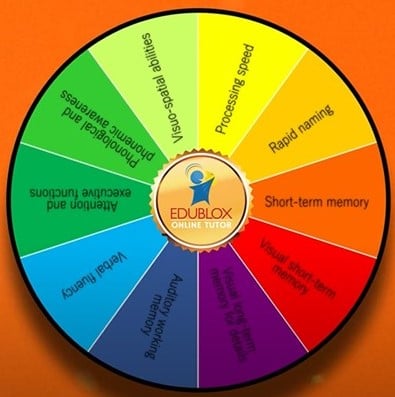
Some researchers now claim that phonological factors may be less important than is commonly accepted (Byrne, 2011). Current thinking in the field is that multiple deficits are likely to interact to cause reading disability, and not only a lack of phonological awareness (Pennington, 2006; Peterson & Pennington, 2012; Van Bergen et al., 2014).
Menghini and team (2010) compared 60 children with dyslexia to 65 age-matched typical reading children. The frequency of occurrence of children with dyslexia who exhibited a phonological deficit only was 18.3%, while most of the children (76.6%) showed other deficits in addition to a phonological deficit:
- 16.6% displayed executive deficits,
- 13.3% visual-spatial perception deficits, attention, and executive deficits,
- 8.3% attention and perceptual deficits, and
- 8.3% attention and executive deficits.
.
A study by Moura et al. (2015) reveals significant processing speed, shifting, and verbal fluency deficits in 50 Portuguese dyslexic 8- to 12-year-olds compared to 50 typically developing children.
18.) Contrary to popular belief, Albert Einstein was probably not dyslexic
It is often said that Einstein only started talking at four, which is then described as a sign that he had dyslexia. According to Einstein’s biographers, however, this is not true. Einstein was introduced to his newborn sister when he was two-and-a-half years old. He asked, rather disappointedly, expecting a toy, “Where are the wheels?”
Einstein entered school at six and, against popular belief, did very well. When he was seven, his mother wrote, “Yesterday Albert received his grades, he was again number one, his report card was brilliant.” At the age of twelve, Einstein was reading physics books. At 13, after reading Critique of Pure Reason and the work of other philosophers, Einstein adopted Kant as his favorite author. About this time, he also read Darwin.
19.) Neuroplasticity offers new hope to people with dyslexia

Technology advancements have made it possible for scientists to see inside the brain, resulting in the knowledge that the brain is ‘plastic.’ Neuroplasticity is the ability of the brain to develop new neurons and synapses in response to learning.
Positive correlations between gray matter and the time spent learning and practicing their specialization have been reported in several groups, including musicians, jugglers, and bilinguals (Maguire et al., 2006).
A study by Skeide and colleagues shows that when adults learn to read for the first time, the changes that occur in their brain are not limited to the outer layer of the brain, the cortex, but extend to deep brain structures in the thalamus and the brainstem. This was observed in illiterate Indian women who learned how to read and write for six months.
20.) Start intervention early to prevent academic and emotional problems
Poor reading skills cast a dark shadow. Extensive evidence suggests that learning to read is directly linked to a young child’s self-concept and mental well-being, and that children with hampered reading skills fare poorly academically. Moreover, as the poor achiever’s hope for a fulfilling and productive life starts to diminish, they contribute significantly to the overall number of school dropouts, single parents, juvenile delinquents, and imprisoned adults.
As many as 75% of those incarcerated in the United States have not graduated from high school, and 70% are functionally illiterate and read below a fourth-grade level. In addition, underemployed and unemployed adults constitute a significant percentage of children who once failed to acquire functional literacy levels.
21.) Accommodations are not the same thing as instruction
Once a child has a dyslexia diagnosis, they may be eligible for accommodations, such as extended times on tests. While accommodations might improve grades, they are not a replacement for intervention. Accommodations will not teach a child to read or spell.
22.) Reading out loud for 20 minutes per day will not improve a child’s reading
Reading out loud will not help a child sound out unknown words.
23.) Your child can make it!
A few wrong turns do not dictate a child’s life. People with dyslexia succeed all the time in almost every profession you can think of.
.
Key takeaways
Edublox offers cognitive training and live online tutoring to students with dyslexia, dysgraphia, dyscalculia, and other learning disabilities. Our students are in the United States, Canada, Australia, and elsewhere. Book a free consultation to discuss your child’s learning needs.
.
References and sources:
Byrne, B. (2011). Evaluating the role of phonological factors in early literacy development: Insights from experimental and behavior-genetic studies. In S. A. Brady, D. Braze, & C. A. Fowler (Eds.), Explaining individual differences in reading: Theory and evidence (pp. 175-195). New York: Psychology Press.
Dunson, W. E. (2013). School success for kids with dyslexia & other reading disabilities. Waco, TX: Prufrock Press Inc.
Elliott, J. G., & Grigorenko, E. L. (2014). The dyslexia debate. Cambridge: Cambridge University Press.
Fawcett, A. (2001). Dyslexia at school: A review of research for the DfES. Unpublished review for the Department for Education and Skills, the British Dyslexia Association and the Dyslexia Institute.
Fern-Pollak, L., & Masterson, J. (2016). Dyslexia and the English writing system. In V. Cook & D. Ryan (Eds.). The Routledge handbook of the English language (pp. 223-234). New York: Routledge.
Gentry, J. R. (2006). Breaking the code: The new science of beginning reading and writing. Portsmouth, NH: Heineman.
Hinshelwood, J. (1917). Congenital word-blindness. London: Lewis.
Howes, N. L., Bigler, E. D., Lawson, J. S., & Burlingame, G. M. (1999). Reading disability subtypes and the test of memory and learning. Archives of Clinical Neuropsychology, 14(3), 317–339.
Krafnick, A. J., Flowers, D. L., Luetje, M. M., Napoliello, E. M., & Eden, G. F. (2014). An investigation into the origin of anatomical differences in dyslexia. Journal of Neuroscience, 34(3), 901-908. https://doi.org/10.1523/JNEUROSCI.2092-13.2013
Lyon, R. (2001). Measuring success: Using assessments and accountability to raise student achievement. Retrieved April 22, 2021 from http://projectpro.com/ICR/Research/Releases/NICHD_Testimony1.htm
Maguire, E. A., Woollett, K., & Spiers, H. J. (2006). London taxi drivers and bus drivers: A structural MRI and neuropsychological analysis London taxi drivers and bus drivers. Hippocampus, 16(12), 1091-1101.
Martin, A., Kronbichler, M., & Richlan, F. (2016). Dyslexic brain activation abnormalities in deep and shallow orthographies: A meta-analysis of 28 functional neuroimaging studies. Human Brain Mapping, 37, 2676–2699.
Mather, N., & Wendling, B. J. (2012). Essentials of dyslexia assessment and intervention. Hoboken, NJ: Wiley.
Menghini, D., Carlesimo G.A., Marotta, L., Finzi, A., & Vicari, S. (2010). Developmental dyslexia and explicit long-term memory. Dyslexia, 16(3), 213-225.
Menghini, D., Finzi, A., Benassi, M., Bolzani, R., Facoetti, A., Giovagnoli, S., … Vicari, S. (2010). Different underlying neurocognitive deficits in developmental dyslexia: A comparative study. Neuropsychologia, 48(4): 863–72.
Molfese, D. L., Molfese, V. J., Barnes, M. E., Warren, C. G., & Molfese, P. J. (2008). Familial predictors of dyslexia: Evidence from preschool children with and without familial dyslexia risk. In G. Reid, A. J. Fawcett, F. Manis, & L. Siegel (Eds.). The SAGE handbook of dyslexia (pp. 99-120). London: Sage.
Moura, O., Simões, M. R., & Pereira, M. (2015). Executive functioning in children with developmental dyslexia. The Clinical Neuropsychologist, 28(S1), 20-41. https://doi.org/10.1080/13854046.2014.964326
Pais, A. (1982). Subtle is the lord: The science and the life of Albert Einstein. Oxford: Oxford University Press.
Pennington, B. F. (2006). From single to multiple deficit models of developmental disorders. Cognition, 101(2), 385-413.
Peterson, R. L., & Pennington, B. F. (2012). Developmental dyslexia. The Lancet, 379, 1997–2007.
Shaywitz, S. (2005). Overcoming dyslexia: A new and complete science-based program for reading problems at any level. New York, NY: Alfred A. Knopf.
Sigmundsson, H. (2005). Do visual processing deficits cause problem on response time task for dyslexics? Brain and Cognition, 58(2), 213–216.
Skeide, M. A., Kumar, M., Mishra, R. K., Tripathi, V .N., Guleria, A., Singh, J .P., … Huettig, F. (2017). Learning to read alters cortico-subcortical cross-talk in the visual system of illiterates. Science Advances, 3(5), e1602612. https://doi.org/10.1126/sciadv.1602612
Stanley G., Kaplan, I., & Poole C. (1975). Cognitive and nonverbal perceptual processing in dyslexics. Journal of General Psychology, 93(1), 67-72.
Tanaka, H., Black, J. M., Hulme, C., Stanley, L. M., Kesler, S. R., Whitfield-Gabrieli, S., … Hoeft, F. (2011). The brain basis of the phonological deficit in dyslexia is independent of IQ. Psychological Science, 22(11), 1442-1451.
Thomas, M. (2004). Was Einstein learning disabled? Anatomy of a myth. Skeptic, 10(4).
Van Bergen, E., van der Leij, A., & de Jong, P. F. (2014). The intergenerational multiple deficit model and the case of dyslexia. Frontiers in Human Neuroscience, 8(346), 1-13. https://https;//doi.org/10.3389/fnhum.2014.00346
Weiss, A. H, Granot, R. Y., & Ahissar, M. (2014). The enigma of dyslexic musicians. Neuropsychologia, 54, 28-40. https://doi.org/10.1016/j.neuropsychologia.2013.12.009
Authored by Sue du Plessis (B.A. Hons Psychology; B.D.), an educational specialist with 30+ years of experience in learning disabilities.
